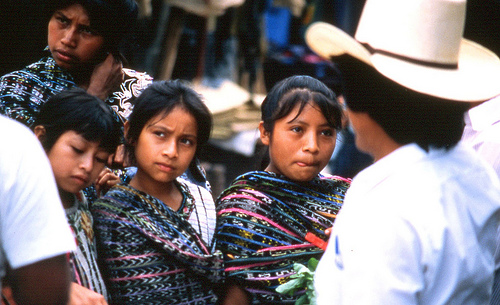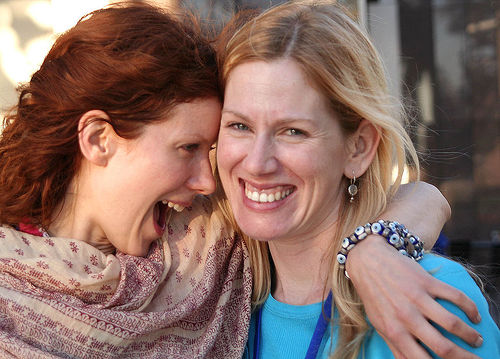Photo by JD Lasica
Improve the quality of the images you shoot for your organization
Target audience: Cause organizations, nonprofits, NGOs, journalists, general public. This is part of our ongoing series designed to help nonprofits and other organizations learn how to use and create media.
 With millions of amateur shutterbugs sporting digital cameras that can produce professional results, more and more people are looking to take their shooting skills to the next level.
With millions of amateur shutterbugs sporting digital cameras that can produce professional results, more and more people are looking to take their shooting skills to the next level.
Here are some tips to get you started.
1. Move closer
The most common mistake beginners make is that they stand too far away. Get up close and personal with your subjects. Group your subjects close to each other. (See above.) Pay attention to the expressions on their faces.
2. Compose your shot
Photo by JD Lasica
Before you press the shutter release, try experimenting with different angles. (See above.) Make sure the subjects are nice and tight and no one’s head is cut off. To increase visual interest, position your subjects so that they appear slightly to the right or the left instead of smack dab in the middle. The pros even have a phrase for this: The rule of thirds.) Or line up to their right or left and shoot them from the side instead of straight on.
3. Make good use of light
If you’re outdoors and the sun is bearing down onto the subjects’ faces, they’ll look washed out and squinty. Position your subjects in front of the sun and light up their faces with a flash. It may sound counterintuitive to use a flash outdoors, but it’s one of the keys to capturing a professional-looking image.
4. Look for the unusual angle
Photo by Edlin Roguel
What’s the point in snapping an uninspired, cliche-ridden photo? Avoid shots with stiff, posed, awkward grins or pictures that prop your subjects in front of too-familiar landmarks. Instead, opt for the fresh and unexpected. Try an unusual angle — from above, below or the side, instead of straight on.
5. Help your subjects look natural
Photo by JD Lasica
If you’re shooting people, you’ll capture a more natural and genuine expression if you put them at ease. For example, if you’re photographing kids, act goofy, play games with them, or tell a joke instead of saying, “Say cheese!”
6. Take lots of shots
Photo by JD Lasica
Don’t just take one shot and think you’re done — this isn’t film! Subjects shut their eyes or make awkward expressions, so keep shooting. Make sure your memory card has enough megapixel memory storage firepower to keep on snapping (at least 4GB per card). Natural shots often occur just before or just after a posed shot.
Please comment on, correct or expand upon this article.
Related
• How to capture great photos on the roadJD Lasica, founder and former editor of Socialbrite, is co-founder of Cruiseable. Contact JD or follow him on Twitter or Google Plus.
 This work is licensed under a Creative Commons Attribution 3.0 Unported.
This work is licensed under a Creative Commons Attribution 3.0 Unported.















Megapixels are a measure of the amount of detail that your camera’s image sensor is able to capture, NOT its storage capacity (as you seem to be suggesting in point #6).
In fact, the more megapixels your camera uses, the FEWER pictures you can take!
Maybe you were thinking of megaBYTES? However, nowadays you’re better off using storage media with several GIGAbytes of capacity in your camera.